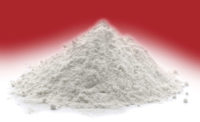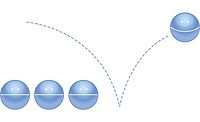TZMI Releases TiO2 Pigment Annual Review 2012

VICTORIA PARK, WA – TZ Minerals International (TZMI) has released the third edition of the TiO2 Pigment Annual Review. The review is dedicated to the $17 billion global titanium dioxide (TiO2) pigment market, which has experienced varying dynamics since the first edition was published by TZMI.
In 2008, the TiO2 pigment industry operated in an environment of depressed profitability with record-high raw material and energy costs resulting in an oversupply of TiO2 in western markets. With the onset of the global financial crisis, inventories were drawn down, and capacity idled. This made it difficult to restart the supply chain when the market recovered.
The tight supply situation started in 2010 and continued through 2011, with price increases announced regularly during the two-year period. As a result, global pricing increased by eight percent in 2010 and almost 40 percent in 2011.
As the TiO2 producers recovered profitability, it became clear that the titanium feedstock producers were next in line. The global shortage of feedstock resulted from depleting resources in combination with a lack of investment in the industry in the past 20 years.
The past year (2011) turned out to be a year with two faces. TiO2 markets in the first half of 2011 were as buoyant as in 2010, a year which had a record global demand. The year started out with strong momentum in the emerging economies, led by Brazil, Turkey, Russia and India. The second half of the year was characterized by strong volatility, as several European countries were drawn back into territories of negative GDP growth when consumer confidence decreased further and austerity measures continued to be implemented.
In China, the government implemented measures to restrict the availability of credit to cool down an overheating property and housing market. These measures eventually worked their way down the supply chain, and demand in China dropped dramatically. Overall in the fourth quarter of 2011, China’s import volumes dropped by a massive 47 percent compared to the second quarter of 2011.
TiO2 is used predominantly in the production of high-quality surface finishes to impart opacity, brightness and whiteness. It extends the life of the medium it is incorporated into, absorbing and reflecting ultra-violet radiation, which would otherwise accelerate the decomposition of the medium. However, TiO2’s main attribute is to improve the aesthetic appearance of the product and, as such, it is considered to be a quality of life product, and consumption generally increases as disposable income increases.
Five global producers make up more than 56 percent of the global nameplate capacity: DuPont, Cristal Global, Tronox, Huntsman and Kronos. DuPont and Tronox operate only chloride route plants; the other global producers operate plants that use both sulfate and chloride route technologies.
The principal product of the mineral sands industry is titanium raw minerals used as feedstock for the production of primarily, TiO2 and, to a lesser extent, titanium metal.
Of the TiO2 feedstock mined and processed, more than 90 percent is used in the chloride and sulfate methods of TiO2 pigment production.
The TiO2 Pigment Annual Review 2012 provides up-to-date commentary and independent analysis of the TiO2 sector including producers, end-consumers, and supply and demand scenarios, as well as an outlook for coming years. For additional information about the report, visit www.tzmi.com.
Looking for a reprint of this article?
From high-res PDFs to custom plaques, order your copy today!







